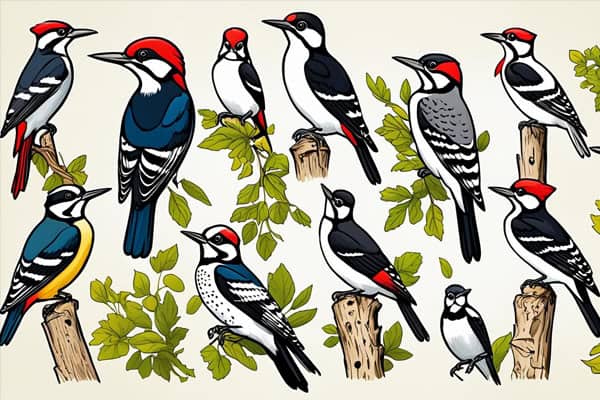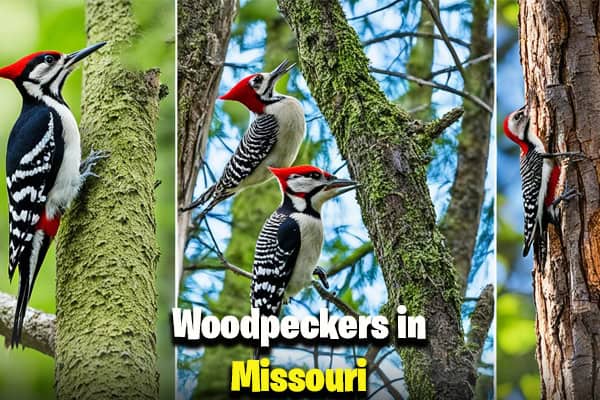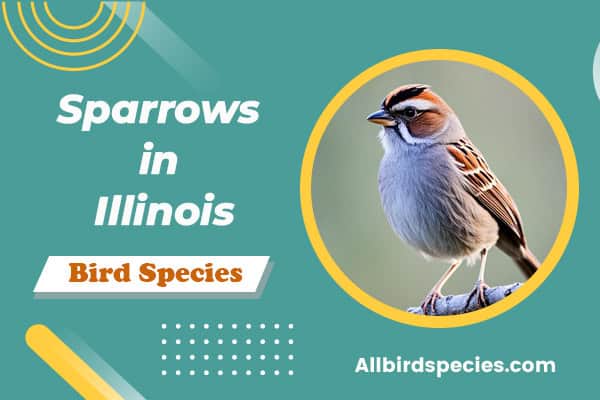Woodpeckers in Wisconsin – 8 Species (With Pictures)
Did you know Wisconsin has eight unique woodpeckers? It’s a great spot for birdwatchers. These birds are crucial for our ecosystems, helping our forests and natural areas stay healthy. We’ll look into their behaviors, where they live, and their conservation status.
Our exploration will deepen our knowledge of these intriguing birds and their role in Wisconsin’s wildlife. Learning how to identify these birds lets us enjoy watching them in nature. We’ll see how they help the environment.
Common Woodpeckers Found In Wisconsin
- Red-Headed Woodpecker
- Red-Bellied Woodpecker
- Pileated Woodpecker
- Downy Woodpecker
- Hairy Woodpecker
- Yellow-Bellied Sapsucker
- Northern Flicker
- American Three-Toed Woodpecker
1. Red-Headed Woodpecker
- Scientific name: Melanerpes erythrocephalus
- Life span: 8 – 10 years
- Size: 19 to 25 cm
- Weight: 56 to 97 g
- Wingspan: 35 to 43 cm
The Red-Headed Woodpecker is a standout among North American woodpeckers. Learning about its unique traits helps us spot these birds in the wild. It also deepens our understanding of these fascinating creatures.

Identification and Characteristics
The Red-Headed Woodpecker is known for its bold colors. It has a bright red head and neck, which contrasts sharply with its black body and white underparts. Adults are about 9 to 10 inches long, making them a medium-sized woodpecker.
Their white wing markings are visible during flight, adding to their appeal. These features make them easy to identify and appreciate.
Feeding and Nesting Behaviors
Red-headed woodpeckers are skilled at catching insects in mid-air. They show great agility while flying upside down. Their diet includes insects, fruits, and nuts.
They choose decaying trees for their nests, where both parents help dig the cavity. The female then takes on incubation duties, showing their teamwork in raising their young.
Conservation Status and Threats
Although the Red-Headed Woodpecker is listed as “Least Concern,” it faces threats to its population. Habitat loss and competition for resources are major concerns. Conservation efforts, like protecting dead trees and restoring habitats, are vital for their survival.
Being aware of these issues helps us support their conservation. It also promotes biodiversity in our ecosystems.
| Feature | Details |
|---|---|
| Coloration | Red head, black body, white underparts |
| Size | 9-10 inches in length |
| Diet | Insects, fruits, nuts |
| Nesting Sites | Dead or decaying trees |
| Conservation Status | Least Concern |
| Threats | Habitat loss, competition for nesting sites |
2. Red-Bellied Woodpecker
- Scientific name: Melanerpes carolinus
- Life span: 10-12 years
- Size: 22 to 26. cm
- Weight: 56 to 91 g
- Wingspan: 35 to 43 cm
The Red-Bellied Woodpeckers is a fascinating bird found in Wisconsin. It stands out with its bright red underparts and black-and-white back. Its beak is shaped like a chisel, perfect for finding food in the woods.

Unique Features and Behavior
This woodpecker has many special traits. It makes a loud call that fills the forest. We often see it on tree trunks or moving on branches.
It’s very good at finding insects to eat. It digs into wood to find beetles and larvae.
Diet and Feeding Patterns
The Red-Bellied Woodpecker eats a wide variety of foods. Insects are a big part of its diet in spring and summer. But it also eats fruits and seeds, making it flexible when food is hard to find.
It searches for food by pecking at bark or looking into small spaces. This helps it find hidden food when other sources are gone.
3. Pileated Woodpecker
- Scientific name: Dryocopus pileatus
- Life span: 6-10 years
- Size: 16-19 inches
- Weight: 10-12 oz
- Wingspan: 26-30 inches
The Pileated Woodpecker is a standout in North America, known for its size and striking looks. Birdwatchers love to see these birds. They are important to the health of forests.
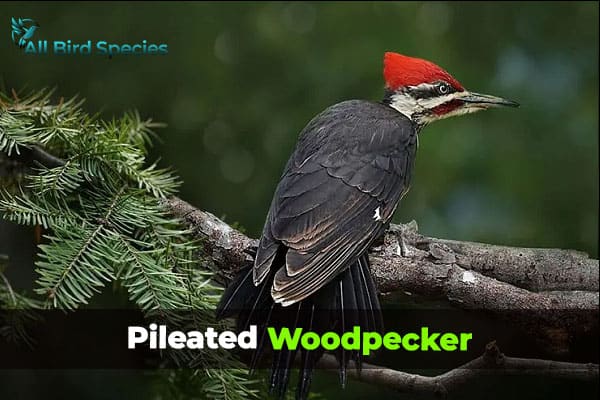
Size and Identification Tips
This woodpecker is one of the biggest, measuring 15 to 19 inches long. Its wingspan reaches up to 26 inches. The Pileated Woodpecker is easy to spot with its black feathers and bright red crest.
Look for their large holes in trees as they hunt for insects. Their loud calls fill the woods. To spot them, remember:
- They are much bigger than other woodpeckers.
- Their red crest on the head is a clear sign.
- They have a long, pointed bill for pecking into trees.
Knowing these tips will help you see the amazing Pileated Woodpecker on your birdwatching trips.
| Feature | Detail |
|---|---|
| Average Length | 15 to 19 inches |
| Wingspan | Up to 26 inches |
| Plumage Color | Black with white stripes |
| Crest Color | Bright red |
| Habitat | Forests, woodlands, and parks |
4. Downy Woodpecker
- Scientific name: Picoides pubescens
- Life span: 2-5 years
- Size: 6-7 inches
- Weight: 1 oz
- Wingspan: 13 inches
Identifying Downy Woodpeckers of wisconsin is easy thanks to their unique look. They are small and very distinct, making them easy to spot in different places.

Distinguishing Features
These woodpeckers catch the eye with their black-and-white feathers. They are among the smallest, measuring 6 to 7 inches long. Their wings have white spots and bars, which sets them apart from other woodpeckers.
It’s helpful to compare them with similar birds like the Hairy Woodpecker. Here’s a table that shows the main differences:
| Feature | Downy Woodpecker | Hairy Woodpecker |
|---|---|---|
| Size | 6-7 inches | 8-10 inches |
| Bill Length | Shorter, about 1 inch | Longer, about 2 inches |
| Wing Pattern | White spots on wings | Solid white without spots |
| Coloration | Black-and-white with a hint of red on males | Similar, but with a more robust build |
Knowing these features makes spotting Downy Woodpeckers during birdwatching easier. They are charming birds that add life and sound to our woods and gardens.
5. Hairy Woodpecker
- Scientific name: Picoides villosus
- Life span: 5-10 years
- Size: 7-10 inches
- Weight: 1.5 oz
- Wingspan: 16-20 inches
The Hairy Woodpecker is a bird you can find all over North America. This section will compare it with the Downy Woodpecker. We’ll look at their differences and where they like to live.
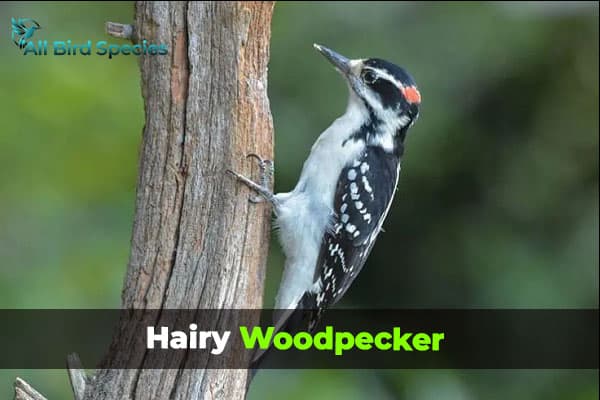
Comparison with Related Species
The Hairy and Downy Woodpeckers may look alike at first, but they have some big differences. The Hairy Woodpecker is bigger and has a longer bill. This helps it get to insects hidden under thick bark. Knowing these differences makes watching these birds more fun.
Habitat Preferences
The Hairy Woodpecker loves to live in big, old forests with lots of trees. These forests are key to their survival in the ecosystem. They live in forests with both evergreen and deciduous trees. This gives them everything they need to find food and make nests. Learning about where they live helps us see why we need to protect these places.
6. Northern Flicker
- Scientific name: Colaptes auratus
- Life span: 5-8 years
- Size: 8-10 inches
- Weight: 2.5 oz
- Wingspan: 14-16 inches
The Northern Flicker is a fascinating woodpecker with unique behaviors. It’s different from its relatives because it often looks for food on the ground. This makes it stand out in the woodpecker family.

This bird has striking plumage with brown and black spots. The color under its belly can change, showing light buff, yellow, or red. These colors help people tell it apart from other birds.
Northern Flickers live in various places like woodlands, parks, and even backyards. They like areas with lots of food and good places to nest. They eat ants and beetles, which they find on the ground.
In short, the Northern Flicker is special because of how it finds food and looks. Learning about its habits and looks helps us appreciate this amazing bird more.
| Characteristic | Detail |
|---|---|
| Plumage | Brown with black spots, light underparts |
| Unique Behavior | Ground foraging |
| Diet | Ants, beetles, and other insects |
| Habitat | Woodlands, parks, backyards |
7. Yellow-Bellied Sapsucker
- Scientific name: Sphyrapicus varius
- Life span: 5-8 years
- Size: 8-10 inches
- Weight: 2.5 oz
- Wingspan: 14-16 inches
The Yellow-Bellied Sapsucker Woodpeckers of wisconsin is a fascinating bird for birdwatchers. Its unique migration and nesting habits are a big deal. These birds move to warmer places in the winter and return to Wisconsin in spring to breed. This journey is crucial for their survival and helps the local ecosystem.

Migration Patterns
During the winter, Yellow-Bellied Sapsuckers head to the southern United States. In spring, they fly back to Wisconsin to find a mate and breed. This migration is not just for warmth; it’s key to their survival. By getting to Michigan early, they can set up territories and get ready for breeding.
Nesting Habits
The way Yellow-Bellied Sapsuckers nest is quite interesting. They make holes in trees for their nests. These safe spots protect their eggs and young. Both parents work together during breeding, which helps them succeed and play a big part in the forest ecosystem.
| Aspect | Details |
|---|---|
| Migration Timing | Winter in the southern U.S., return in spring |
| Nesting Site Construction | Holes drilled in trees |
| Parenting Roles | Both parents participate in care |
| Seasonal Behavior | Active during spring and summer in breeding |
8. American Three-Toed Woodpecker
- Scientific name: Picoides dorsalis
- Life span: Up to 6 years
- Size: 8-9 inches
- Weight: 1.5-2.5 oz
- Wingspan: 14-16 inches
The American Three-toed Woodpecker is a distinctive species native to the boreal forests of North America, ranging from Alaska to the northern continental United States. Characterized by their speckled black and white plumage and unique three-toed feet, these woodpeckers stand out from others that typically have four toes.
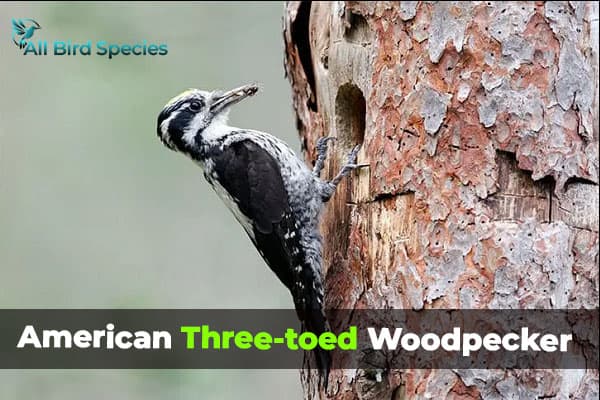
With their specialized, barbed tongues, American Three-toed Woodpeckers excel at extracting insects from crevices in trees. This adaptation makes them adept hunters within their forest habitat.
This species, notably present in Wisconsin, exhibits unique dietary and nesting behaviors. They primarily feed on insects like wood-boring beetle larvae beneath the bark of coniferous trees but will also forage for ants and other insects on the ground.
For nesting, American Three-toed Woodpeckers prefer dead or dying trees, where they excavate cavities to create their nests. These cavities provide a secure and cozy environment for raising their young.
9. Black-Backed Woodpecker
- Scientific name: Picoides arcticus
- Life span: Up to 7 years
- Size: 8-9.5 inches
- Weight: 1.5-2.5 oz
- Wingspan: 15-18 inches
The Black-backed Woodpecker is a striking bird with a distinctive appearance. Native to North America, these woodpeckers are easily recognized by their black back adorned with white spots, a bold black and white striped face, and a vibrant red crown. Their underparts are a subtle yellowish-white.

A notable trait of the Black-backed Woodpecker is its attraction to recently burned areas. They thrive in these environments, feeding on insects that are drawn to the charred wood.
This species exhibits unique nesting behaviors, preferring to nest in blackened trees in recently burned areas. The dead trees in these habitats are ideal for excavating their nest cavities and foraging for insects.
Their diet primarily includes wood-boring insects such as beetles, ants, and caterpillars, which they extract from the bark and wood of dead and dying trees. By controlling insect populations and reducing disease spread, Black-backed Woodpeckers play a vital role in maintaining the health of forest ecosystems.
Can You Shoot Woodpeckers in Wisconsin
In Wisconsin, shooting woodpeckers is generally prohibited due to their protected status under both state and federal laws. Woodpeckers play a crucial role in ecosystems by controlling insect populations and creating habitats for other wildlife. If you’re facing issues with woodpeckers on your property, it’s best to explore non-lethal deterrents or consult local wildlife experts for guidance. Always ensure you’re adhering to local regulations to protect these fascinating and beneficial birds.
Woodpeckers in Other Regions:
| Woodpeckers in Missouri |
| Woodpeckers in Montana |
| Woodpeckers of Indiana |
| Woodpeckers in Ohio |
| Woodpeckers in Virginia |
Wrapping Up…
We’ve looked into the amazing variety of woodpeckers in Wisconsin. Each one has a special role in our ecosystems. They help by foraging and nesting in ways that support nature.
It’s important to protect their homes. Supporting local efforts helps woodpeckers and our communities. We invite everyone to enjoy birdwatching and support these amazing birds.

